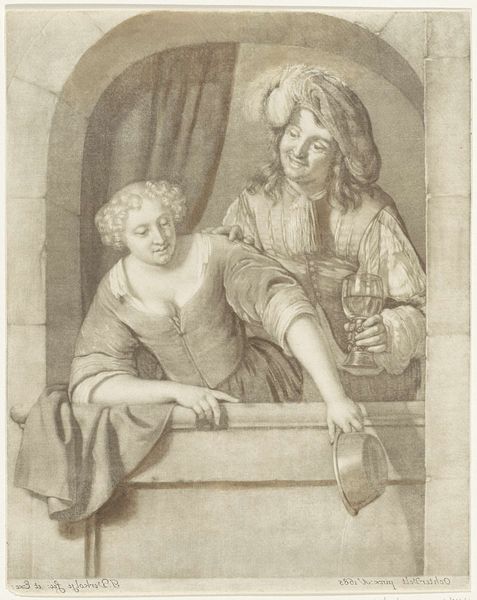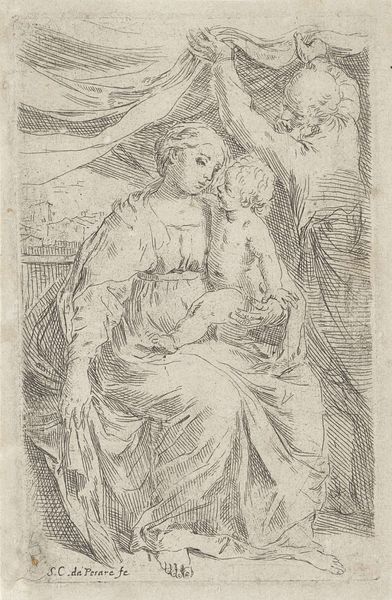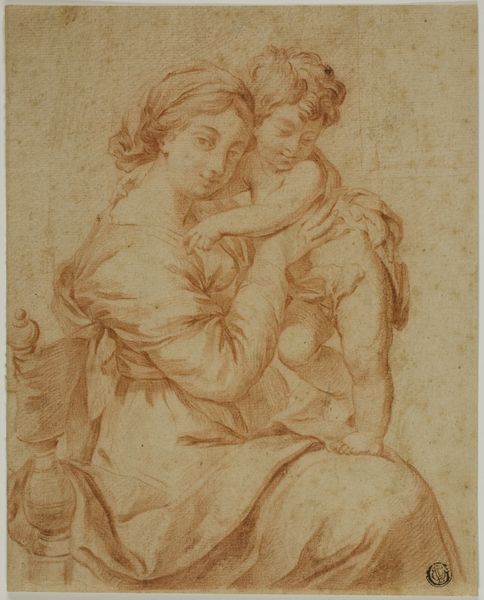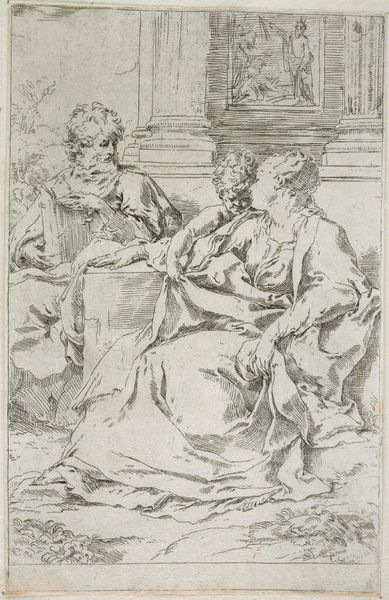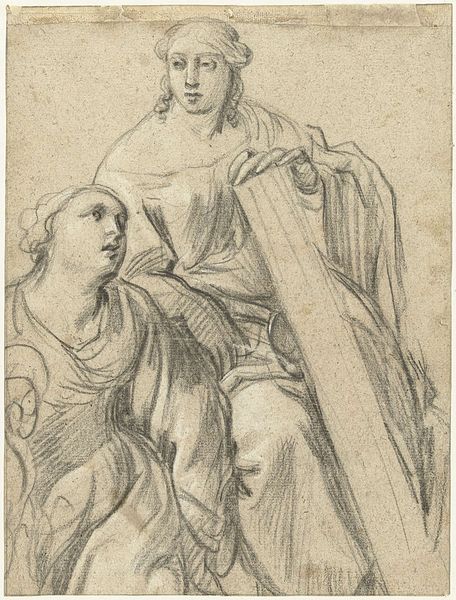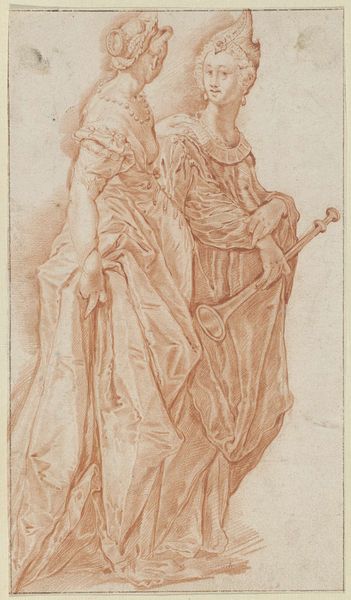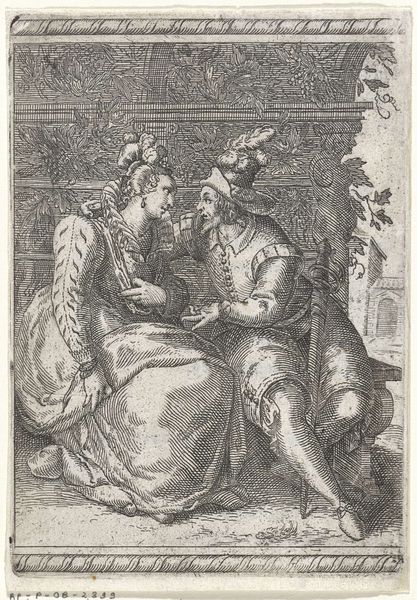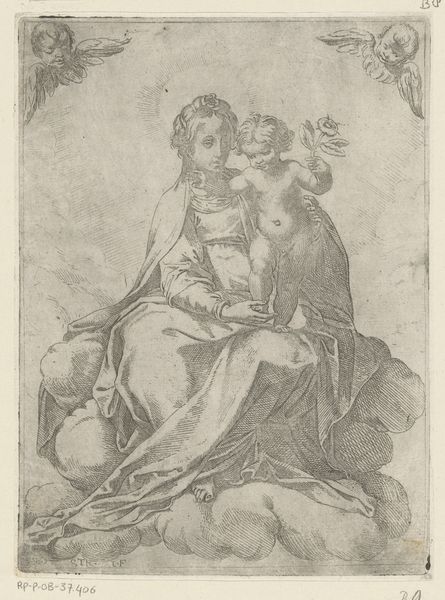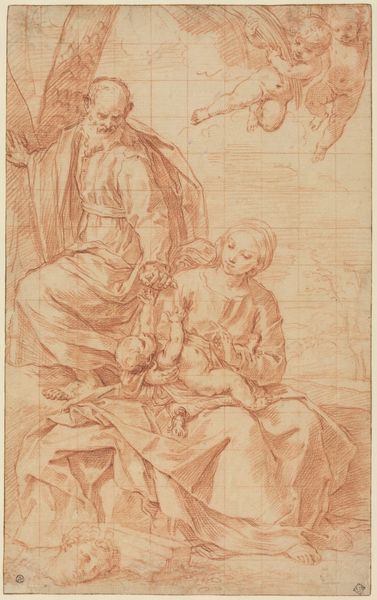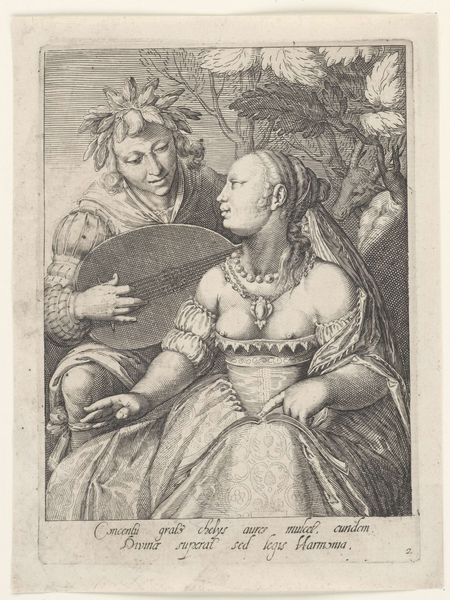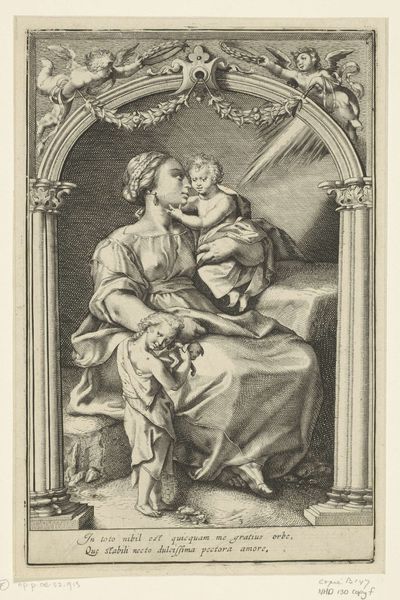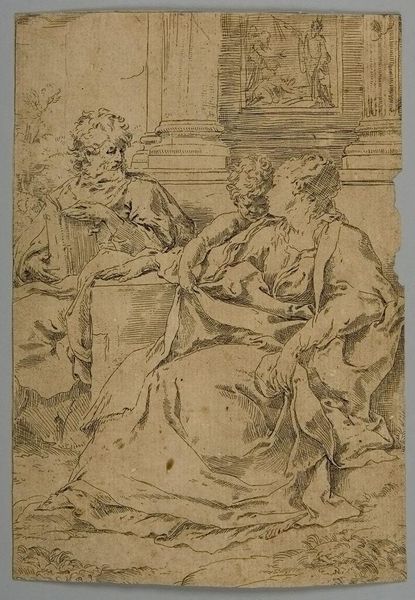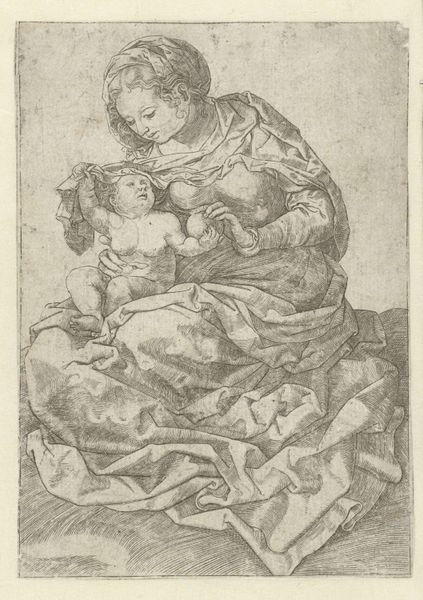
drawing, paper, ink
#
portrait
#
drawing
#
charcoal drawing
#
paper
#
ink
#
pencil drawing
#
portrait drawing
#
italian-renaissance
Dimensions: height 164 mm, width 223 mm
Copyright: Rijks Museum: Open Domain
Editor: This ink and charcoal drawing on paper, "Twee zittende vrouwen," or "Two Seated Women," dates back to around 1530 and comes to us from an anonymous artist, although the style is evocative of the Italian Renaissance. The sepia tones give it a warm and ancient feel, and I can't help but feel drawn to the enigmatic expressions on their faces. What strikes you most about this piece? Curator: Enigmatic is the perfect word! The way the artist plays with light and shadow—it's almost as if they are trying to capture a fleeting emotion. They're present, but they're also lost in thought, wouldn’t you say? The women almost seem like different facets of one consciousness, which to me is what makes them a true puzzle of time and spirit. What is even more fascinating, is that an artist has placed one behind the other, both resting with only enough room between to share each other's silence and ponderance, wouldn’t you agree? Editor: I do, especially how they don’t quite connect—the forward figure is in profile, while the other gazes almost mournfully downward. Was this kind of emotional ambiguity common in portraiture of the period? Curator: That’s an astute observation! And yes, it was becoming increasingly common as artists of the Renaissance became more invested in psychological depth. Think of Leonardo's *Mona Lisa*, that same kind of tantalizingly unfathomable expression. These portraits start hinting at a whole inner world of feeling. They capture not just how people look, but how people feel… perhaps how they fear, how they yearn. In this particular work, there’s a timeless quality to the emotion, as though this very scene of contemplation and internal inquiry has echoed across generations. It’s a profound capturing of being human, wouldn’t you say? Editor: Definitely! Thinking about it now, the use of simple materials emphasizes this. It feels incredibly immediate, and raw, which enhances that timeless quality you’re speaking of. It feels like a whisper from the past. Thanks for the insight! Curator: My pleasure! Indeed, perhaps it's a gentle invitation from those women across the centuries to consider the echoes within our own lives.
Comments
No comments
Be the first to comment and join the conversation on the ultimate creative platform.
